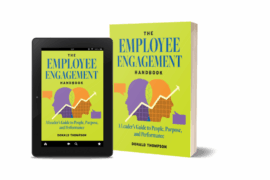Several years ago, a Fortune 500 tech company proudly described itself as having a “tough” culture, where blunt communication was prized. Performance was strong, so the executive team initially dismissed complaints about rude behavior. But these small acts of disrespect—eye rolls, interruptions, curt emails—were slowly poisoning the work environment.
Employee engagement plummeted, innovation stalled, and turnover among top performers climbed to 30% above the industry average. Customer complaints rose 34% as internal culture affected service. An estimated $20 million in productivity losses were linked to disengagement and conflict. As the former CTO explained, “We thought we were just being direct and results-focused. We didn’t realize we were creating a toxic environment that was killing our business from the inside.”
Like the executives in this example, some leaders might discount reports of incivility, rudeness, and disrespect—saying employees are too sensitive. But left unaddressed, these behaviors erode profits. According to a SHRM analysis, incivility costs U.S. employers roughly $2 billion a day in reduced productivity and absenteeism. Another report puts the annual cost of incivility at $14,000 per employee.
Incivility demands C-suite attention

When rudeness goes unchecked, trust evaporates, people shut down, and top talent walks out the door. And if leaders don’t take that seriously, they’re leaving money on the table. Research published in the Harvard Business Review shows how incivility affects the bottom line:
- Poor performance: 66% of employees who experienced incivility said their performance declined. Even witnessing rude behavior can cut performance by 20%.
- Distraction: 80% of employees lose work time worrying about incidents of disrespect.
- Less innovation: people who are treated rudely are 30% less creative and produce 25% fewer ideas.
- Disengagement: 78% said their commitment to an organization declined after experiencing rude behavior.
- Higher turnover: 12% of employees quit because of incivility, and replacing each one costs 150–200% of their salary.
- Legal risk: Patterns of disrespect might escalate into hostility and even litigation; a single employment case can cost up to $250,000.
It’s clear that incivility—while tempting to overlook—depresses performance, raises costs, and exposes organizations to avoidable compliance and reputational risk.
Why civility is so hard to manage
Incivility is subjective and often unnoticed. It rarely rises to the level of overt harassment or discrimination, so employees are unlikely to lodge formal complaints. Instead, the most common acts of incivility in the workplace are interrupting, being dismissive or rude, withholding information, and gossiping or spreading rumors.
Even when these behaviors are unintentional, they can erode psychological safety—the foundation for trust, creativity, and collaboration. And because everyone defines “respect” differently, depending on their culture, generation, and personality, what feels like straightforward communication to one person can feel disrespectful to another.
Imagine a manager says to his multigenerational team, “This report is not acceptable. I expect it to be redone by noon tomorrow.” The baby boomer on the team might think, “That’s direct feedback. Great.” But the Gen Z employee thinks, “That language was disrespectful and rude. Mistakes should be learning experiences. This workplace isn’t psychologically safe, and I’m looking for another job.”
Same message, two different interpretations. That’s the challenge for leaders and why generic solutions don’t work. Without data, you’re guessing at the root cause and what might fix it.
How leaders can stop the profit bleed

Promoting civility isn’t coddling people; it creates an environment where people can focus, collaborate, and produce results. To build respectful workplaces, leaders need to observe group dynamics, establish norms, and promote psychological safety.
1. Observe and listen to reveal signs of trouble
The first step in addressing incivility is awareness. Leaders need to pay attention to the subtle signals that something may be wrong:
- Are meetings consistently running long because of tension or conflict?
- Do certain employees avoid working with particular colleagues?
- Are once-engaged team members suddenly quiet, withdrawn, or calling in sick more often?
- Do emails or chat messages sound terse or dismissive?
Then, leaders should create opportunities for employees to share feedback safely. If people don’t feel psychologically secure enough to speak up in a group, try one-on-one check-ins or anonymous pulse surveys that ask questions like, “On a scale of 1–10, how respectful was our collaboration this week?”
2. Document patterns and get the data
Once you’ve observed warning signs, start documenting what you see. Track when and where incivility occurs—missed meetings, tense interactions, or abrupt emails—and note the context. Are problems linked to deadlines, leadership changes, or specific teams?
Look for patterns, not isolated incidents. Logging these behaviors helps separate emotion from evidence. Over time, this record becomes a valuable data source you can use to brief the executive team or HR on what’s really happening.
3. Intervene before problems multiply
Small acts of incivility can snowball into hostility if leaders don’t step in quickly. Address them before frustration turns into disengagement or legal risk.
Start by resetting expectations. Teams need explicit norms for how they communicate, debate, and deliver feedback. Shift the focus from blaming individuals to building a shared standard of respect. Ask, “What do we need to do to create a high-performing, respectful team?” and make those expectations part of your everyday culture.
Use behavior-focused feedback. Describe what you observed and how it affected others. For example: “When you interrupted Jane in the meeting, it cut the conversation short and discouraged others from contributing.” This approach clarifies the issue without attacking someone or their intentions.
Many managers simply aren’t aware of how their tone or style lands with others. Coaching helps uncover these blind spots, especially across generational or cultural lines.
4. Escalate: Know when to seek outside help
When issues persist or appear across multiple teams, it’s a sign the problem is bigger than one manager or department. Systemic incivility requires an objective, data-driven approach that internal teams often can’t provide on their own. That’s when it’s time to bring in outside expertise.
A psychosocial risk assessment provides hard data—identifying patterns of disrespect, disengagement, and distrust across teams. The result is a clear map of where incivility exists, what’s driving it, and how much it’s costing the organization. When you can show that a manager’s abrasive tone is costing the company $200,000 in lost productivity, you have the evidence needed to drive meaningful, accountable change.
The competitive advantage of civility
Companies that treat civility and respect as strategic priorities innovate faster, retain top talent, and operate more efficiently. Consider the following examples:
- Microsoft saw a 32% increase in innovation metrics and an 8% reduction in attrition after focusing on civil behavior.
- Cisco CEO Chuck Robbins credited $36 million in annual savings to a civility initiative that reduced toxic behaviors and boosted collaboration.
And our Fortune 500 tech company? After implementing a psychosocial risk assessment and targeted leadership coaching, the business saw a 65% reduction in turnover and a 34% productivity increase within the first year.
Civility is more than simply being nice or politically correct. When leaders have zero tolerance for rude behavior, organizations build winning cultures where people feel respected, trusted, and empowered to contribute their best work.
Curious if a psychosocial risk assessment might benefit your organization? At the Center for Organizational Effectiveness, powered by Workplace Options, we help companies uncover the real costs of incivility and partner with them to design targeted interventions. Register for “Building Workplace Trust: The Key to Organizational Health and Effectiveness” to watch Shelley Willingham’s presentation on Workplace Incivility on demand.




